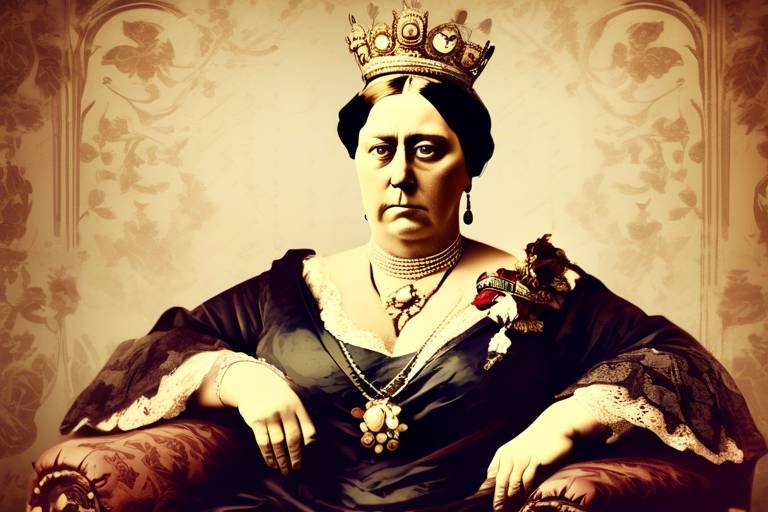Dmitri Mendeleev: The Creator of the Periodic Table
Dmitri Mendeleev, a remarkable figure in the history of science, is widely known as the creator of the Periodic Table. His innovative work revolutionized the field of chemistry and laid the foundation for modern scientific understanding. Mendeleev's brilliance and dedication to his craft have left an indelible mark on the world of science, shaping the way we categorize and study chemical elements.

Early Life and Education
Dmitri Mendeleev, the brilliant mind behind the creation of the Periodic Table, had a fascinating early life and educational journey that laid the foundation for his groundbreaking work in the field of chemistry. Born in Siberia in 1834, Mendeleev's childhood was marked by adversity and resilience. Despite losing his father at a young age, he displayed exceptional academic talent and a keen interest in science.
His thirst for knowledge led him to pursue higher education, studying at the University of St. Petersburg where he delved into various scientific disciplines. It was during this time that Mendeleev's passion for chemistry blossomed, fueled by the mentorship of renowned chemists who recognized his potential.
As Mendeleev continued his academic journey, he embarked on a quest to unravel the mysteries of chemical elements and their properties. His inquisitive nature and analytical mind set him apart, laying the groundwork for his future revolutionary work in organizing the elements of the periodic system.

Development of the Periodic Table
Dmitri Mendeleev's development of the Periodic Table stands as a monumental achievement in the history of science. His innovative approach to organizing the elements revolutionized the field of chemistry and laid the foundation for our modern understanding of the building blocks of matter.
Through meticulous research and analysis, Mendeleev devised a systematic method for arranging the known elements based on their atomic mass and chemical properties. This method allowed him to identify patterns and trends among the elements, leading to the creation of the Periodic Table as we know it today.
One of the key aspects of Mendeleev's work was his recognition of the periodic nature of the elements, where certain properties recurred at regular intervals. By organizing the elements in this way, he was able to predict the existence and properties of undiscovered elements, a remarkable feat that demonstrated the power of his organizing principle.
Moreover, Mendeleev's periodic law, which states that the properties of elements are a periodic function of their atomic masses, provided a unifying framework for understanding the relationships between different elements. This law not only helped to explain the observed patterns in the Periodic Table but also paved the way for further discoveries in the field of chemistry.
Overall, Mendeleev's development of the Periodic Table represents a watershed moment in scientific history, showcasing the power of human ingenuity and the impact that a single individual can have on our collective knowledge. His work continues to inspire generations of scientists and serves as a testament to the enduring legacy of a true visionary.

Organization of Elements
When it comes to the organization of elements, Dmitri Mendeleev's approach was nothing short of revolutionary. He meticulously arranged the known elements into a systematic table, not just for the sake of cataloging them, but with the foresight to predict the properties of yet-to-be-discovered elements. This foresight was akin to a skilled chess player anticipating their opponent's moves several steps ahead. By leaving gaps in his table for elements that had not yet been found, Mendeleev displayed a remarkable understanding of the periodicity of chemical elements.
Imagine the Periodic Table as a grand puzzle, with each element representing a unique piece that fits into a larger picture. Mendeleev's organizational genius was akin to solving a complex jigsaw puzzle, where each piece's placement was not arbitrary but based on its atomic mass and chemical behavior. This systematic arrangement allowed scientists to see patterns and trends among elements, unlocking a deeper understanding of the underlying principles governing chemical reactions.
Through his methodical approach, Mendeleev not only classified the elements but also provided a framework for future discoveries. It was as if he had laid down a roadmap for scientists to navigate the uncharted territory of the chemical world, guiding them towards new elements that would eventually fill the empty spaces in his table. This forward-thinking strategy set the stage for countless breakthroughs in chemistry and cemented Mendeleev's legacy as a visionary in the field.

Impact on Chemistry
The impact of Dmitri Mendeleev's Periodic Table on the field of chemistry cannot be overstated. His revolutionary organizing principle transformed the way scientists viewed and understood the elements, leading to significant advancements in the field. By arranging the elements based on their atomic mass and chemical properties, Mendeleev not only created a systematic framework for categorizing elements but also paved the way for predicting the properties of undiscovered elements.
One of the key contributions of Mendeleev's Periodic Table was its ability to predict the existence and properties of elements that had not yet been discovered. By leaving gaps in the table for these yet-to-be-found elements, Mendeleev demonstrated the periodicity of chemical elements and provided a roadmap for future explorations in chemistry. This predictive power of the Periodic Table has been instrumental in guiding research and discovery in the field.
Furthermore, Mendeleev's Periodic Table played a crucial role in facilitating the discovery of new elements. By identifying patterns and trends among the known elements, scientists were able to use the table as a guide to uncovering previously unknown elements, expanding the periodic table and deepening our understanding of the building blocks of matter.
Moreover, the Periodic Table has been instrumental in shaping the understanding of chemical relationships and properties. By organizing the elements in a logical and systematic manner, Mendeleev's table provided a framework for studying the behavior of elements and their interactions in chemical reactions. This has been essential in advancing various fields of chemistry, from inorganic chemistry to materials science.
In conclusion, the impact of Dmitri Mendeleev's Periodic Table on chemistry has been profound and enduring. His innovative approach to organizing the elements revolutionized the field, leading to new discoveries, predictive capabilities, and a deeper understanding of the fundamental principles of chemistry.

Recognition and Legacy
After Dmitri Mendeleev's groundbreaking work in developing the Periodic Table, his contributions to science were widely recognized, solidifying his legacy as one of the most influential figures in the field of chemistry. The Periodic Table not only organized the known elements at the time but also provided a framework for predicting the properties of undiscovered elements. Mendeleev's innovative approach to arranging elements based on atomic mass and chemical properties laid the foundation for modern chemistry, revolutionizing the way scientists understand the fundamental building blocks of matter.
Throughout history, Mendeleev's work has been celebrated for its enduring impact on the scientific community. His periodic law, which states that the properties of elements are periodic functions of their atomic masses, has stood the test of time and remains a fundamental principle in chemistry. The Periodic Table continues to be a vital tool for researchers, educators, and students, guiding the study of elements and their behaviors.
Despite the evolution of the Periodic Table beyond Mendeleev's original version, his legacy remains intact. Scientists have built upon his work, refining the organization of elements and expanding the table to accommodate new discoveries. Mendeleev's innovative spirit and dedication to scientific inquiry have inspired generations of chemists to push the boundaries of knowledge and explore the mysteries of the natural world.

Continued Relevance
Despite being developed over a century ago, Dmitri Mendeleev's Periodic Table continues to hold immense significance in the field of chemistry today. Its continued relevance lies in its ability to serve as a foundational tool for understanding the behavior of elements, predicting their properties, and guiding scientific research.
One key aspect of the Periodic Table's continued relevance is its role in elucidating the periodic trends that govern the behavior of elements. By organizing elements based on their atomic number and properties, the table allows scientists to identify patterns and relationships among different elements, facilitating the interpretation of their chemical behavior.
Moreover, the Periodic Table remains essential in educational settings, serving as a fundamental resource for students studying chemistry. Its systematic arrangement of elements provides a framework for learning about the properties and characteristics of different elements, aiding in the comprehension of complex chemical concepts.
Furthermore, the Periodic Table continues to inspire ongoing research and exploration in the field of chemistry. Scientists use Mendeleev's organizational principles as a basis for investigating new elements, studying their properties, and expanding our understanding of the natural world at the atomic level.
In essence, the continued relevance of Dmitri Mendeleev's Periodic Table underscores its enduring importance as a cornerstone of modern chemistry, guiding scientific inquiry, education, and discovery in the quest to unravel the mysteries of the elements.

Inspiration for Future Generations
The work of Dmitri Mendeleev in creating the Periodic Table continues to serve as a wellspring of inspiration for future generations of scientists and researchers. His innovative approach to organizing the elements based on their properties and atomic masses has set a remarkable standard in the field of chemistry. Just as Mendeleev's bold predictions paved the way for the discovery of new elements, his legacy motivates aspiring chemists to push the boundaries of knowledge and explore the mysteries of the periodic table.
Imagine Mendeleev, meticulously arranging the elements like a skilled composer crafting a symphony, each element playing its unique role in the grand orchestra of chemistry. His work not only elucidated the patterns and trends in the behavior of elements but also instilled a sense of wonder and curiosity in those who follow in his footsteps. The Periodic Table stands as a testament to human ingenuity and the power of scientific inquiry, offering a roadmap for future generations to navigate the vast landscape of chemical elements.
As young minds delve into the intricacies of Mendeleev's creation, they are not merely studying a static table of elements but embarking on a journey of exploration and discovery. The periodicity of elements, the relationships between atomic structures, and the predictive power of the table continue to captivate and inspire, igniting a passion for discovery and innovation in the hearts of budding scientists.
Frequently Asked Questions
- What is the Periodic Table?
The Periodic Table is a tabular arrangement of chemical elements, organized based on their atomic number, electron configuration, and recurring chemical properties. It provides a systematic way to understand the relationships between elements and predict their behavior.
- Who created the Periodic Table?
The Periodic Table was created by Dmitri Mendeleev, a Russian chemist, in 1869. Mendeleev's innovative approach to organizing the elements based on their atomic mass and properties revolutionized the field of chemistry.
- What is Mendeleev's periodic law?
Mendeleev's periodic law states that the properties of elements are a periodic function of their atomic masses. This law guided the arrangement of elements in the Periodic Table and allowed Mendeleev to predict the properties of undiscovered elements.
- How does the Periodic Table help in understanding chemistry?
The Periodic Table serves as a fundamental tool in chemistry by organizing elements in a logical manner, highlighting trends in properties, and aiding in the prediction of element behavior. It provides a visual representation of the building blocks of matter.
- Why is Mendeleev's work significant in the history of science?
Mendeleev's work is significant because it laid the foundation for modern chemistry and our understanding of the elements. His Periodic Table not only organized the known elements but also predicted the existence of new elements, showcasing the power of scientific reasoning and organization.



















